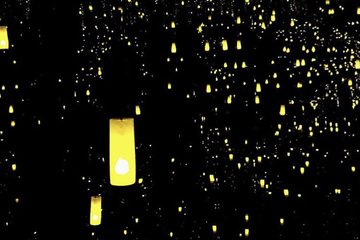
01/28/2020
SUNY Cortland’s new online literary magazine, Hoxie Gorge Review, blends together innovative poetry, fiction and nonfiction from established national writers as well as emerging talents.
It was also a labor of love for the 12 students in an upper-level course on the publishing industry taught by instructor Heather Bartlett in the English Department. Those students served as editors, soliciting, selecting and editing submissions for the first issue published in December.
While there are many online literary magazines that feature the work of undergraduate writers, including Cortland’s own Crystallize Review, few are in the mold of Hoxie Gorge Review: a magazine run by undergraduates featuring the work of national writers.
“Having a national literary magazine that is staffed and run by undergraduate writing students is very significant,” Bartlett said. “What I wanted to do was to create a way for our students to have a direct hand in shaping and contributing to the literary discourse, which we’re talking about all the time in the classroom.”
The first issue includes work from acclaimed writers Christine Kitano and Ashley M. Jones. It also features writing from those just breaking into the publishing world.
SUNY Cortland students sorted through more than 1,000 submissions and ultimately picked writing from 25 authors. They handled correspondence with authors regarding acceptances, edits and rejections.
Bartlett, who designed the course through a Fine Teaching Development Award and a Teaching Innovation Grant, believes the hands-on, behind-the-scenes experience of creating a literary magazine from scratch will only help the students in their journey as writers.
“It was really affirming in thinking about as a writer, when you submit your work and it’s either accepted or rejected, it can be really easy to be really disappointed when you get a rejection,” she said. “When you’re on this side, it really puts things into perspective. We received more than 1,000 submissions and published only 25 writers.
“It wasn’t always about whether the writing was good; it was about if it was going to fit and help create those echoes we were looking for. It was a healthy dose of perspective for all of us as writers. When you send your work out into the world, this is what happens.”
The artistic choices made by student editors was another main focus of the course. They decided against a distinct theme for the first issue but were conscious of how the final selection of pieces would work together collectively.
“We were reading other online magazines to get a sense of trends in publishing in terms of contemporary literature,” Bartlett said. “We were trying to answer the question, ‘What makes a necessary and publishable story or poem or essay?’ The students were soliciting work from writers that the students admired and found through this research and analysis. They were working together to establish the vision and the aesthetic for what this issue was going to be.”
Since the launch of Hoxie Gorge Review, Bartlett has received tremendous feedback from contributors, readers and faculty at other institutions. That has Bartlett excited about formulating a strategy for a second issue. So too does the energy of the 12 students who made the first issue of Hoxie Gorge Review a reality.
“Seeing the way in which the students so fully invested themselves in this, it made teaching and the things I wanted to teach about — craft, writing and professional writing — so much easier. They were so into it and it was so important to them.”
Read the first issue at HoxieGorgeReview.com. For more information, contact Bartlett at 607-753-2230.